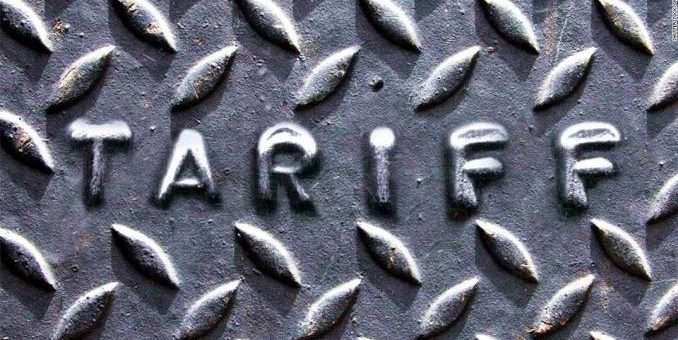
Constant change is no stranger to the world of retail and the latest example is the recently announced tariffs on imports from China and other nations. (See this link for the Official 2018 Special 301 Report and this link for a list of items that will be impacted). In short the Trump administration is considering either a 10% or 25% tariff on $200 billion worth of Chinese goods, causing alarm for many businesses that rely on goods from China.
The response from the retail community is pretty unanimous in its displeasure of the aforementioned tariffs. NRF president Matthew Shay is on record as stating “This is like a trillion dollars worth of economic activity potentially subject to tariffs, tariffs don’t work, they never worked, and they’re not going to work this time either.” This recent interview with Jo-Ann Stores on the matter does a good job outlining the retail implications of this type of policy.
Given that none of us are likely in a position to halt this kind of initiative, our time is best spent preparing for the economic and market impact that this potential policy will have on our individual cost and pricing structure. We will spend the rest of this post outlining the potential price changes you can make as well as detail the implications of each decision. This can be a useful framework as you determine which approach to take given your overall strategy and approach to pricing.
What are your options?
There are four basic strategies are to hold prices constant and absorb the loses elsewhere, to pass absolute costs to consumers for tariff impacted items, to pass relative costs to consumers based, and to adjust prices based on elasticity measurements.
- Hold Prices Steady- Maintaining prices constant retains customer image and has simple implementation. However, it requires absorbing loses on a scale which may be unsustainable. Since tariffs represent significant cost increases, this strategy succeeds only if tariffs end quickly.
- Pass Cost Increase to Consumers- Directly passing costs to consumers is a relatively simple solution: if the cost of an item increases by $10, raise the price by $10. This will keeps margin values constant across the board, while margin percent will decrease. It is easily justifiable to consumers due to tariffs and simple to implement. However, this ignores differences in customer willingness to pay, which is decoupled from costs. This strategy also fails to account for product strategy differences – the difference between revenue drivers and traffic drivers have the same types of price increases added to them, which will likely disrupt intended strategies.
- Percentage Increase- A more nuanced method of raising prices keeps margin percentage constant via price increases rather than absolute margin. An item with a pre-tariff cost of $50 and post-tariff cost of $60 and a pre-tariff price of $100 (50% margin) would have its price increased to $120. Alternatively, if the item’s pre-tariff price was $55 (9% margin), the new price would be $66. This passes on the percentage of the tariff impact to customers and has a relatively larger impact on price increases in products which are already high margin. Given that high margin items tend to be items which customers are price insensitive to, this strategy is more likely to keep existing strategies relatively intact and raise prices comparatively more on items which are less price sensitive, more accurately tracking consumer behavior.
- Utilize Demand Elasticities- Finally, companies can use historic demand elasticities for products to determine how they increase their prices. While prices will need to increase due to tariffs, customer desire for products is decoupled from increased costs. The measure for consumer willingness to pay is demand elasticity. An intelligent company will leverage demand elasticity metrics to determine prices increases. The objective becomes identifying inelastic products and increasing their prices, while leaving elastic prices alone as much as possible. If pricing strategies were correctly determined, this results in a very similar result to keeping margin percentage constant, but also provides an opportunity to intelligently change the strategy of certain items based on their elasticities. If a product was being used as a margin driver but is highly elastic (and thus ill-suited as a margin driver), leaving the price constant despite tariffs transitions the product to a traffic driver role as other suppliers increase their prices, and better fits the product to a strategy. Conversely, if an item was used as a traffic driver but is inelastic (and thus ill-suited as a traffic driver), this provides an opportunity to raise the price, transitioning the product to a margin driver, significantly increase the company’s bottom line.
Ultimately, a well-informed company can use the incoming tariffs as an opportunity to adjust prices of impacted categories. This provides an excellent opportunity to adjust prices to more accurately reflect consumer desire, and realign strategies based on sales data, assuming the company has access to accurate demand elasticities of their products.
